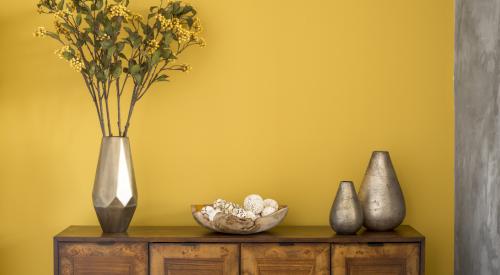| The retro feeling of black and white accented by a blue called Oxygen is surprisingly gender-neutral. Brown covers the room from the ceiling to the floor without feeling too dark, but it needs proper lighting and accents. |
In a few months, the Color Marketing Group, an international, not-for-profit association, will predict the color directions for the next few years and identify some of the strongest continuing trends. Meanwhile, CMG member Doris Pearlman, president of Denver-based Possibilities for Design, shares some ongoing trends.
Pearlman has tracked color trends for years. In the 1980s, she says, trendy colors — dusty rose and teal — stood out, while earthy tones, including almost every shade of green, dominated the ’90s. In this decade, people are moving toward spirituality with a "fascination with water and its calming influence."
Blue: "When I first got into this industry, I was told you never want to build with blue because it won’t sell," Pearlman says. "But the blue end of the palette is really growing."
The names of the new and stable blues from CMG reflect interest in water and nature with names such as Swim, Sail, Aero, Ocean Cruise and Deep Arctic.
Pearlman says navy and white is a particularly effective color combination for first-time buyers and move-downs. And Oxygen, a marriage of blue and green, is especially popular with both genders.
Green: Green, although changed, is certainly not gone. Whereas khaki hues prevailed before, colors such as Soda Green — which CMG describes as "effervescent ... this soothing green quenches our thirst for serenity and illuminates from within" — and Wasabi, a grayish green, now take center stage.
Red: Sweetheart Red moves toward the blue side of red, with a romantic, 1940s nostalgia, according to CMG forecasters. Marrakesh and Vreeland red (think Nancy Reagan, says Pearlman) draw on browns and earthy tones. Marrakesh conjures up exotic places and resonates with luxury buyers or those aspiring to luxury.
Brown: Considered by many as the "new black," brown "is softer and more earth-toned and can be used in many more places than black," says Pearlman, who notes that black still works well as an accent to indicate luxury. Golds, rusts, coppers and other burnished metallics often complement brown tones, especially in a luxury setting.








